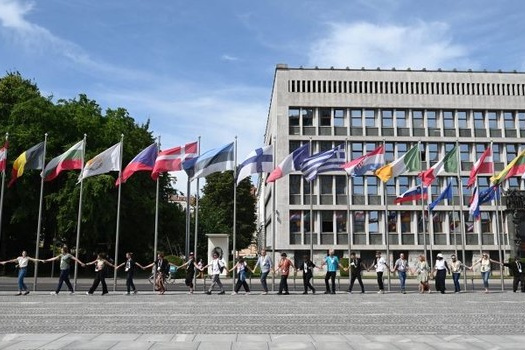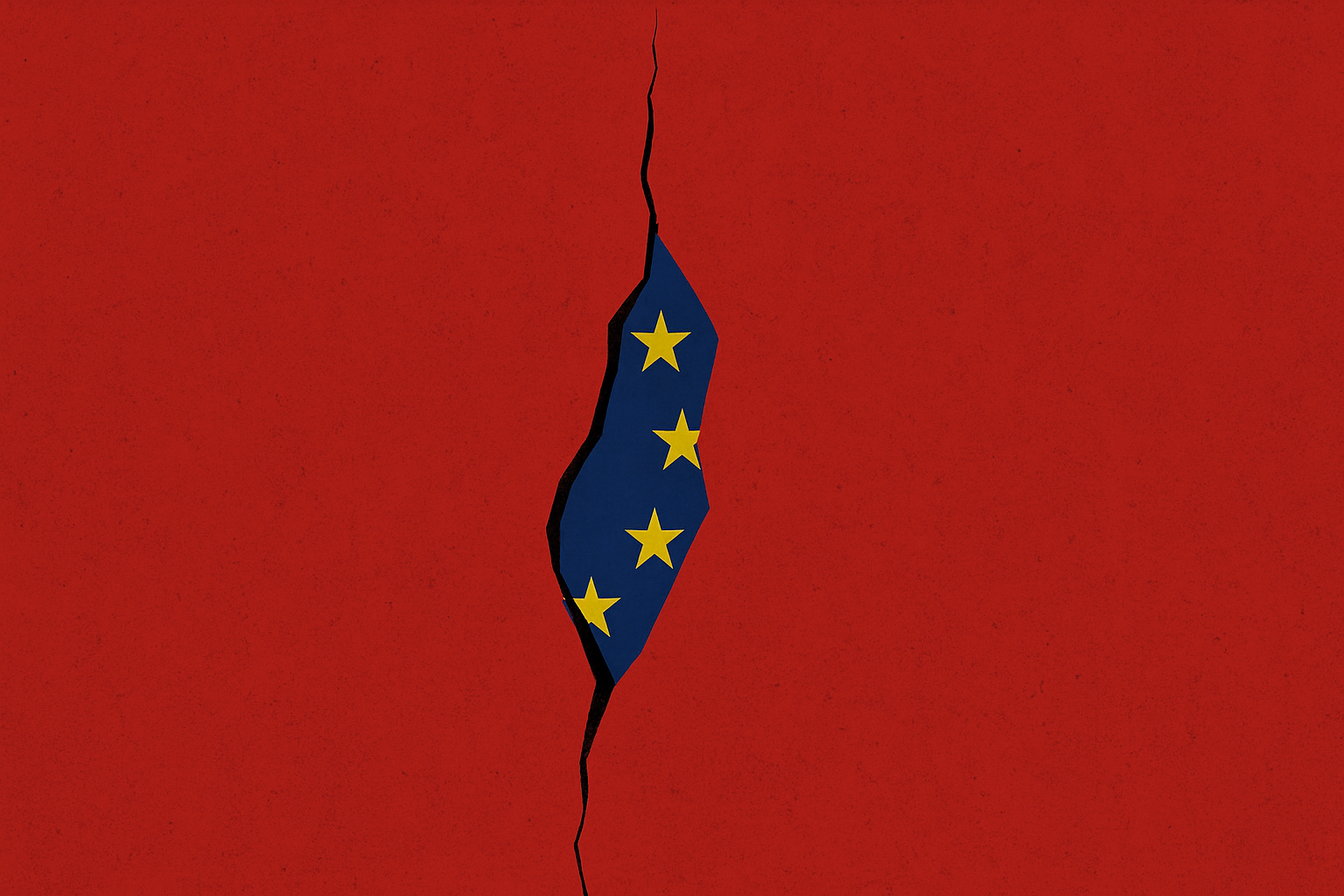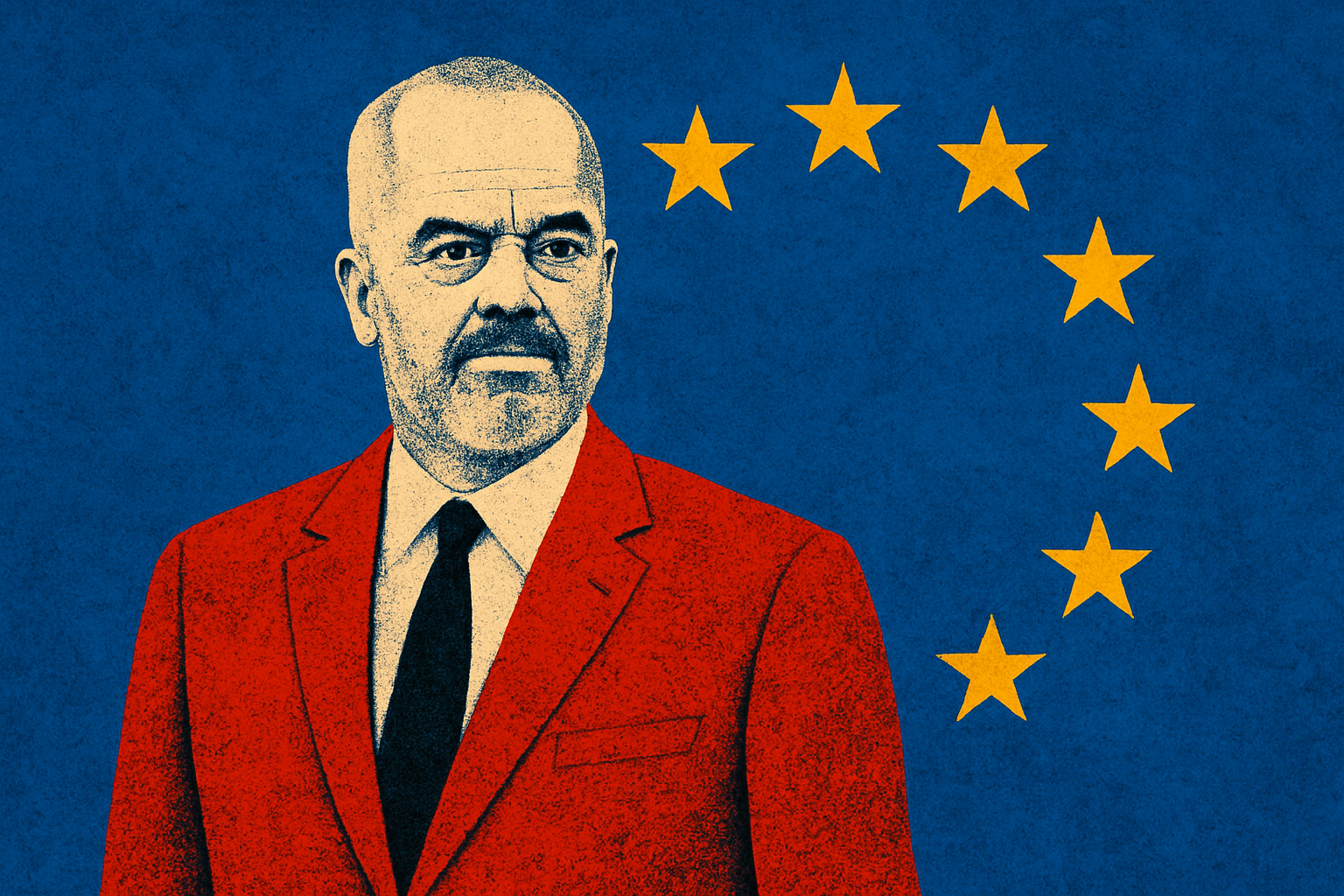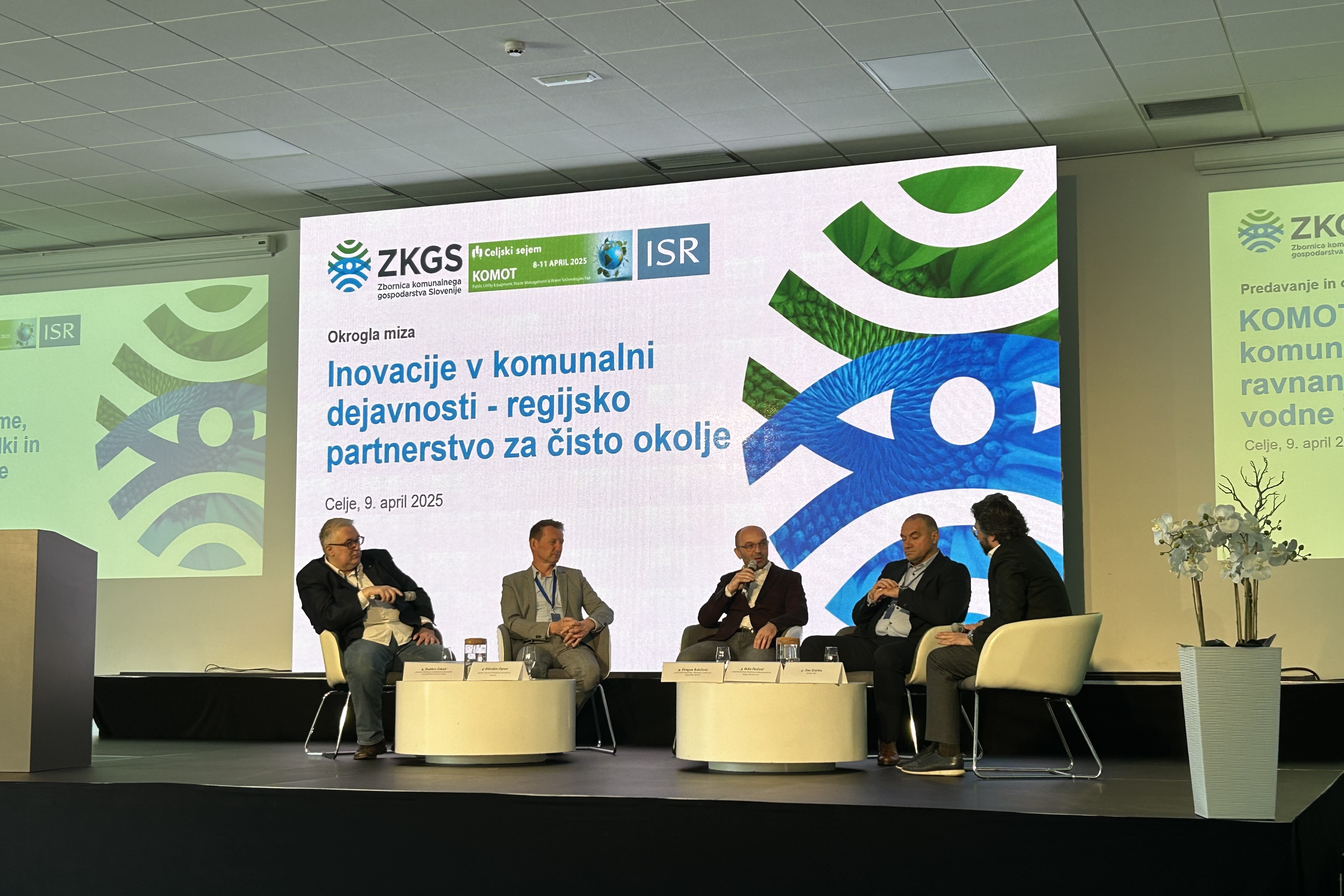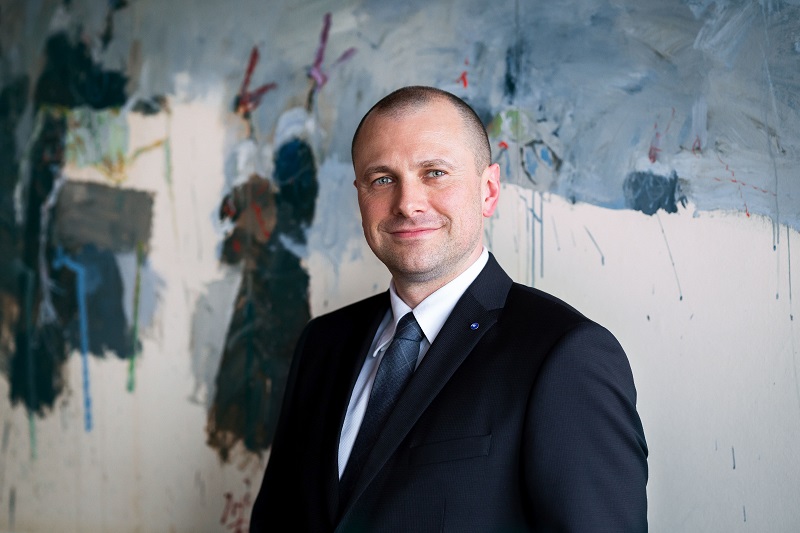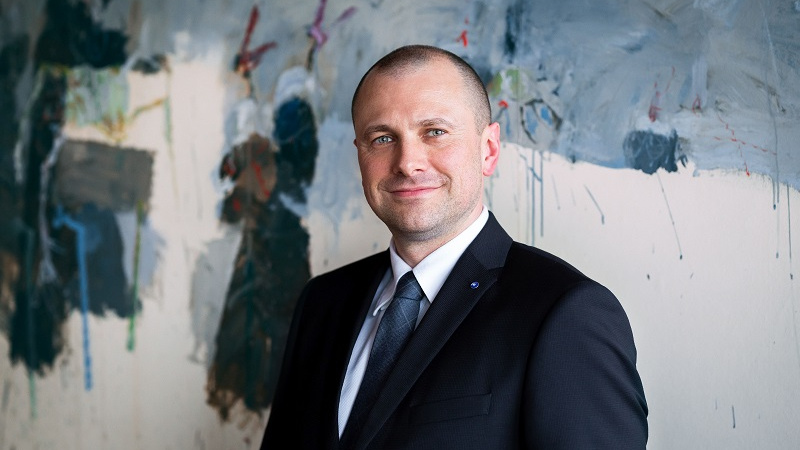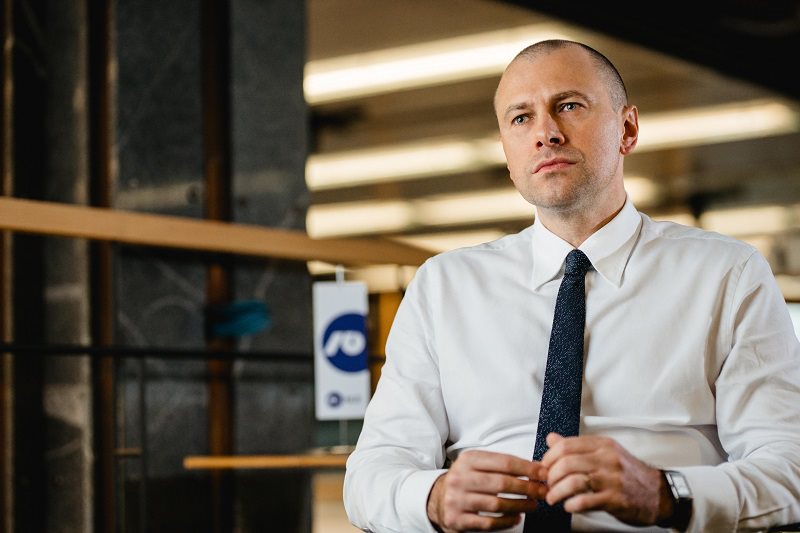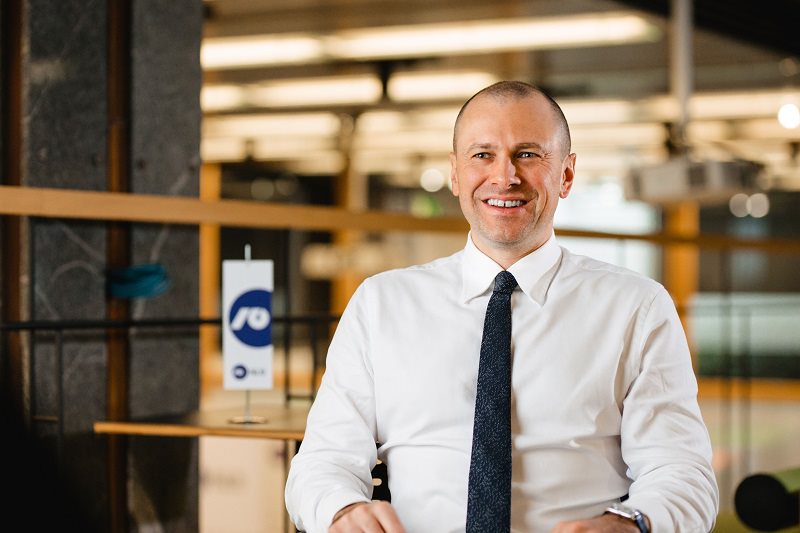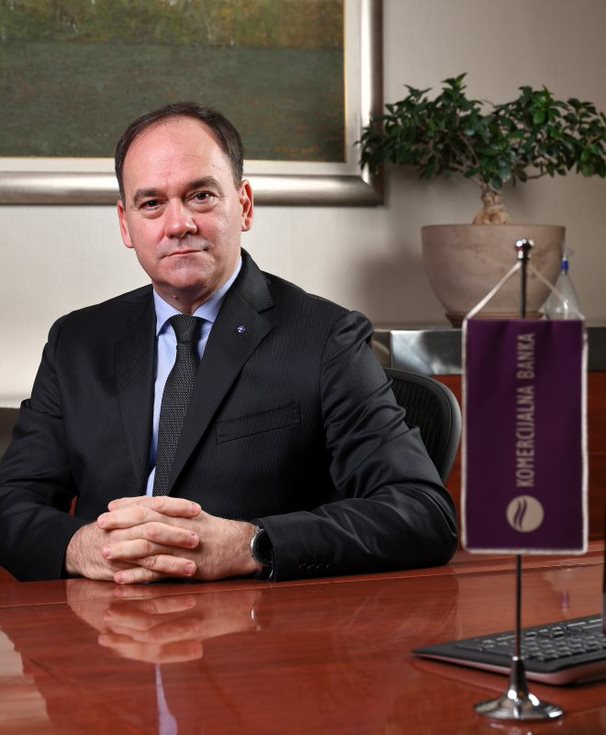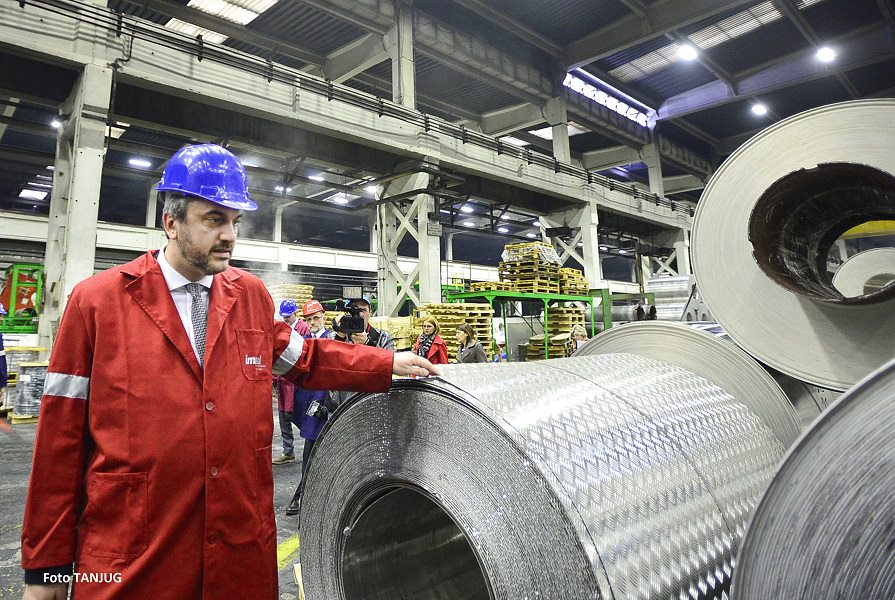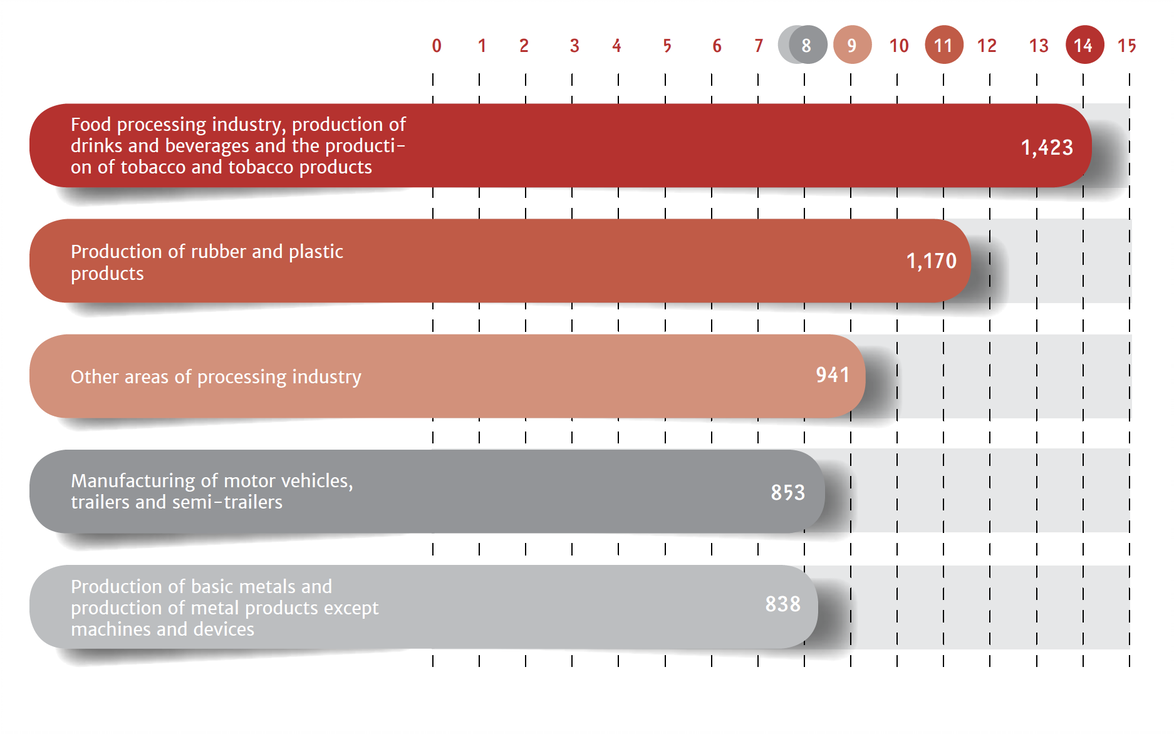An Ever-Evolving Success Story in the Adriatic
Beneficial link between sports, business and politics
The Adriatic
Aljoša Žvirc
JOURNALIST AT THE ADRIATIC
The Adriatic region might not be the biggest sports market, but it makes up for it by giving its sportsmen and sportswomen unwavering support and idolization. Having recognized this fact, businesses have poured money into sports in every way imaginable, which in the case of a big sports successes translate into streets full of people showing their colours and support for national teams. Invariably the biggest stars are always wrapped in sponsors’ images and logos, while commercials proudly fill billboards and other advertising media.
The connection has always been there –the link between sports, business, and governments. At the top, no one can go on giving their best without the support of passionate crowds who lift everything to a whole new level. The Adriatic region might not be the biggest sports market, but it makes up for it by giving its sportsmen and sportswomen unwavering support and idolization. Having recognized this fact, businesses have poured money into sports in every way imaginable, which in the case of a big sports successes translates into streets full of people showing their colours and support for national teams. Invariably the biggest stars are always wrapped in sponsors’ images and logos, while commercials proudly fill billboards and other advertising media. Although many businesses and even governments can get quite a pushback for posing with sportspeople, especially after their biggest wins, it is nevertheless true that without the support of politics, businesses, and local commerce, stakeholders would not reachthe same level of mutual benefit. This is even more important in times of a crisis like the breakout of the COVID -19 pandemic.
Businesses, governments, and everyone active in sports would support the claim that passion runs high when it comes to sports, even more so in such regions like the Adriatic. People here are said to be living at both ends of the emotional spectre –with great passion, support, joy and boasting there also comes a lot of misunderstanding and rage. History is intertwined with lives of ordinary people, experiencing how wars could tear them apart, or pull them together again, giving rise to heartfelt stories of success. The forgiving nature of the region, as well as the rallying around those who can boast with successful stories (whether in sports or anywhere else for that matter), makes for an interesting impact –here people react to good deeds with their own support, perhaps even more intense than the initial spark that triggered them. A step forward made by the authorities and businesses, who show great interest and support, usually results in two steps forward made by the local population. They crave for heroes and feel that by showing their support, they are sharing in their heroes’ glory. So, it is always an evolving link, but sport lies in its center and is always trying to get a bit more out of each other side it is involved with. But society also gets undeniable benefits. Sport helps people forget about their daily problems for a little while. Sport is the proverbial glue that helps the society function a tad better.
In the long term, popular support translates into financial stability and profit.
This is even more evident from a historical perspective. The former Yugoslavia was a sporting superpower, its heroes enjoying sort of a mythical status throughout the region. Despite different nations and religions coexisting inside those borders, something that inevitably gave rise to friction, people always had their teams to support and lean on to. Multiple world championship titles in team sports such as basketball, water polo, strong showings in football, volleyball, handball, and others –these sports always supported the claim that they can erase boundaries. And along with the success of champions, so have businesses always aspired to broaden their reach. At least for a while –until sports became one of the most important catalysts for political change and the eventual break up of Yugoslavia.
Sports became one of the most important catalysts for political change and the eventual break up of Yugoslavia.
In the early ’90s, change seemed inevitable, even though the aftermath was especially taxing on the people. Politics, business, and sports had to rally behind their people to help them get back on their feet again. It was a long and drawn-out process, but with the help of governments and local businesses, sports made leaps forward in the last few decades, when everyone had to find solutions in a different economy. Although frictions still exist (and probably always will), the tradition of sporting success remains in smaller but not necessarily less powerful markets. Both individual and team sports lie at the heart of a state’s global recognition. They open up new possibilities for politics, commerce and tourism to explore. It pays being the country where a sports champion was born in and started his or her path to stardom –many fans want to visit where it all began, a sentiment widely shared by the media.
Sporting stars, on their part, appreciate the interest for their roots, and help promote their country’s top attractions (obviously emphasizing their nation’s hospitality and laid-back approach towards tourism). In the end, the focal point of the collaboration between sports and different organizations are various contracts and other mutual deals. This may be even more true now than it was in the past (when everyone was training under more or less the same conditions and corporate sponsorships were minimal or locally driven). Nowadays, the market is a global one, where everyone fights for their chunk of glory, benefits, and popular affection. Every side in this ever-evolving and growing business gives something, and also expects something in return. Sponsorships are still the best way for companies to try and achieve their marketing goals. It is a tough bout, but with the right support, sporting success and its benefits are never far away, whoever might claim the credit forit (in another proverbial case of the chicken and egg).
The NLB Group-a long tradition of giving back to society through social responsibility programmes
The NLB Group has a very comprehensive social responsibility programme spanning from humanitarianism, environmental protection and the support of culture to the care for employees and the development of entrepreneurship as well as sports, the latter being one of the programmes’ pillars. Sport and beyond –a healthy lifestyle is an essential foundation of NLB’s social responsibility. “Sport gets people moving. In modern times, we pay special attention to trying to inspire as many young people as possible to practise sports. An immensely important part of our programme is Sports for young people, in which we support the development of programmes that animate the widest possible base of young people by supporting both sports associations and sports clubs that apply for tenders“, explains Blaž Brodnjak, the CEO of NLB. “We live in a time of ‘social media likes’, as the younger generations are building self-esteem on the number of approvals and thumbs-up for their statements or photos published on social media. Once these young people will have appeared in the labour market and will have taken over responsible professional and life roles, they must understand that well-meant criticism is not harassment but a valuable contribution to their personal development,“ elaborates Brodnjak. “It is especially important for society that young people learn to socialize with their peers in a physical environment, on playgrounds, in sports fields and halls, to learn it is necessary to participate as a team player and to pick up that there are not only victories but also defeats that compose
one’s life. This is our message: ‘Accept defeats with dignity, learn from them and then move on to new victories.’ And we want to communicate these values through our support of sport.“
THE ADRIATIC
This is an article from Adriatic Journal Strategic Foresight 2021
If you want a copy, please contact us at info@adriaticjournal.com.
A Historic Opportunity for the Adriatic Region
Interview with Blaž Brodnjak, CEO of NLB Group
The Adriatic
Tine Kračun
EDITOR IN CHIEF
Jan Tomše
EXECUTIVE EDITOR
Iztok Lazar
PHOTOGRAPHER
The corona crisis has shuffled the cards in the international arena, presenting a unique opportunity for Southeast Europe to attract international supply chains that are looking for better risk-management options, argues Blaž Brodnjak, the CEO of NLB, a banking group with a strong systemic position in the region, and one of the most important business groups in the countries of former Yugoslavia.
Despite last year’s pandemic, NLB actively continued to implement its strategy in the region. At the end of the year, it completed the purchase of a stake of 83.23% in Komercijalna Banka a.d. Belgrade (KB). This was the final milestone in this important deal aimed at realizing NLB’s goal –to become a leading financial institutionwith its headquarters and focus in its home region,Southeast Europe. The KB acquisition makes NLB the third–largest bank in Serbia in terms of total assets. With Blaž Brodnjak, the CEO of NLB bank, we talked about the impact and consequences of the pandemic in the region, the opportunities arising from the crisis, and the role and activities of NLB as a systemic bank.
In your opinion, how did the corona crisis affect economic and social life in Southeast Europe?
The impact is diverse and manifests itself differently in individual sectors as well as countries. It is also necessary to understand the difference between the first wave with full lockdowns, and the second wave when industrial production was exempt from closures. Therefore, we can see a very robust picture in manufacturing, where we are witnessing almost the same year-on-year volumes as in 2019, both in terms of electricity consumption and production volume. For the most part, this also holds for revenue. Food retailers have recorded growth, as has the pharmaceutical sector. There are also many first-class Tier-1 automotive suppliers in Slovenia that maintained a solid order book, and their capacities will be almost fully utilized by the end of this year’s first quarter. By far thehistoricallyhighest proportion of unused loans at the momenthad been earmarked for financing working capital. Since the deposits of the corporate are still growing, this implies that aggregate liquidity is still very robust. On the other hand, we also have industries that are affected by the lockdown or cannot carry out activities at all, which means they have no cash flow. Those industries are forced to rely on state provision. In doing so, it is essential to ensure these companies survive during the closure of their business operations. The measures that make this possible are fiscal. Whether they are sufficient for all segments and subsystems is debatable.However, there is always some moral hazard present as well. When things go bad, we expect the state get involved, and when things go well, we want to limit its involvement. In this part of the world, there is also much improvising, a lot of work is done illegally which is not good either from a healthcare perspective, since we have no control over people’s movements, or from an economic perspective, as this overburdens the public coffers. The truth is always somewhere in between, but closed businesses need enough help to survive until the measures can be lifted and they can resume their operations. Slovenia shares the fate of the core central European countries. Tourism is also moderately to fairly represented in our GDP. On the other hand, among the countries in the region, Serbia is by far the least dependent on the EU. It is self-sufficient in food and energy and open to all sides, from Russia, China, and Turkey to the EU and the USA. Overall, Serbia is by far the least affected by this crisis. If we look at the pandemic measures in Southeast Europe outside Slovenia, we see that many countries have not closed public life. In Bosnia and Herzegovina, people can visit restaurants, go skiing, or visit shopping centres without restrictions.
However, their health situation is not significantly worse than in Slovenia. Indeed, they cannot afford to introduce measures to such an extent as in our country. As a result, the population may be more affected health-wise but not economically. If we look at Serbia, which has not had a completely lock-down during the pandemic, their economy is very robust. The prime minister Ana Brnabić even estimates the GDP had only shrunk from1% to a maximum of 2% in 2020.
Slovenia ranks fourth among European countries in terms of investments in Serbia. How do you see Slovenia’s role in Serbian economy? And what about the NLB’s role, especially after taking over the Komercijalna banka?
Serbia is a ‘natural terrain’ for us. In Austria, Germany, and Italy, Slovenia is emerging as an exporter building the Made in Slovenia brand. In the markets of Southeast Europe, however, this brand is already established. During the transition period, thebrand’s recognition was somewhat lost, but now it is coming back. Recent transactions carried out by Slovenian companies are once again returning Slovenian capitalto a more significant extent. Petrol is becoming the second strongest oil trader in Croatia, and NLB the third strongest bank in Serbia. We operate in two key industries: energy and finance. In the region, there are no global players from USA, UK or Germany. The French are also withdrawing, while the Russian and the Turkish players are trying toassert their influence, hindered by the European Commission’s pushback. This is a specific and competitive environment, which offers great opportunity to local and regional players,provided they have the potential andavision of what they want todo.Inrecent years, Slovenian companies have significantly reduced their debt and are once again looking beyond Slovenia’s borders.Anotheroption(for them–Ed.)is to organise production and sales activities in the countries of the region.To a certain extent, Slovenian companies are seen as role models in the region due to the country’s EU membership, the adoption of the euro, a focus on sustainability and its quality of life. Slovenia is also viewed as a‘local’. Speaking similar languages is an asset, while a shared history is not only a burden but a great advantage, too.
Where do you see the role of Slovenian businesses in promoting the internationalisation of the economy in the region?
I believe reconnection is the key to this region. It is not about nostalgia for the former Yugoslavia, but about removing restrictions on the movement of people, goods, and capital –possibly in the form of a free trade agreement. I think the Scandinavian model is a good example, since not all countries in that region are in the EU nor do they all use the euro as currency. These are very similar circumstances to our region. We also have the advantage of being located almost in the heart of Europe. Due to the accessibility of waterways andthe appropriate infrastructure, this area also has a logistically ideallocation.Adriatic ports provide the most favourable access to Central Europe, with three or even four efficient logistic corridors connecting the region with the centre of Europe. This opens up great opportunities for logistics. In thatrespect, Slovenia has a very good starting point as it is very close to the industrial cluster of South Germany, which is the strongest in Europe.
What do you see as the main opportunities for the region?
The key may be in the specialisation. Slavonia region(in Croatia–Ed.)and Serbia areideal for food production. This can be an enormous business opportunity, especially with regards to the sustainable food production, not only for self-sufficiency, but also for supplying other parts of Europe. Tourism is also an opportunity. Not mass tourism, but sustainable boutique tourism at the highest level. We have the natural resources, but we need to provide services at an appropriate level that would justify thepremium prices charged in that niche.It should also be noted that labour costs in this region are still lower than elsewhere in Europe. In the context of the corona crisis, this is one of the historic opportunities. A significant portion of global supplychains are returning from the Pacific to Europe. The reason is to better manage risks in the event of another pandemic outbreak.
I also see an opportunity in the changing patterns in our daily behaviour, because we move more locally -and will continue to do so in the future–andon the other handthere is less day-to-daywork travel. Both address the sustainable agenda.Also, the region’s competitiveness cannot be underestimated.Labour costs -except for higher wages in Slovenia due to excessive taxation-are still lowerand the population is solidly educated. Just take alook at what a vision can do. To me, an outstanding role model is South Korea, which is a leading country today in four extremely important global industries.It was a vision of one man who managed to attract the others. Now is the time for theSEEregion –especially with the flood of international measures of financial assistance –to build productive infrastructure on which to base sustainable development in targeted activities.
What are the major challenges the region needs to overcome to achieve a breakthrough?
And what is NLB’s role as one of the leading banks in the region?The key thing is political stability with a clear vision. We know that no serious shift will happen without this. A clear vision means political predictability. A precondition, though, is national unity regarding key priorities, independent of ideology or any establishment strictures. Some countries in the region have this vision, others do not. But everyone in the same space is competing with economies that have that vision. Just look at the Digital Serbia project, which is a great example. Serbia has made a decision to become a leader in the region in digital technologies. Today, they educate by far the largest number of computer scientists. Belgrade, Niš, and Novi Sad are becoming hubs for the development of information technology, both for Europe and for other parts of the world. And this happened in less than ten years from taking the decision for such a direction. The region should come together to address and properly outline what its basic competitive advantages are, both in terms of the whole area and of individual countries, and then to pursue common goals jointly. A connected single market would be more competitive, more sovereign, and more resilient to shocks. For this, we need people with a clear vision and a sincere interest in such networking. We need regular dialogue to reach common solutions. Crucially, this should be basedon economic pragmatism, not ideological beliefs.
How would you comment a proposition that this dialogue could be hastened by the business itself and NLB as a strong regional bank?
NLB implements its strategy in the region independently. We do not expect any help; we received state aid in the past and now our mission is to return it. Since the financial rehabilitation, NLB has already paid more than EUR 1.8 billion into Slovenian budget through purchases in privatisation, dividends, payments of different types of taxes and contributions. The state’s share in the bank is currently worth some EUR 240m, so the total assets returned to the state to date stand at more thanEUR 2 billion. The state has invested a total of EUR 2.23 billion in NLB. With the expected growth in dividends and market capitalisation, we will fully repay this amount within a few years.
Our strategy is thereforeimplemented autonomously, independently of the state.However, when I visit countries where we are present, I take every opportunity to appeal to the importance of greater connectivity, a common view, and a larger market, which would result in a better offer of value for investors from abroad. Serbia understands this. In terms of the share of foreign direct investment per capita in recent years, Serbia is among the leaders in the world.So, it has opened up to the world, recognising great value inforeign direct investment. By implementing its strategy, NLB promotes integration, openness, market expansion, and meritocracy. The latter must be achieved in all subsystems.
So what are the key priorities?
In my opinion, the key priority for a small, open economy is becoming internationally competitive. Everyone in the region should be actively involved in this goal as we are in the NLB Group. We want to help the economy with investments that both increase competitiveness and are sustainable. As companies become stronger and more successful, all of us who support them and cooperate with them,become or are becoming, stronger and more successful as well.
How would you define NLB’s position in the region?
NLB deals with socially relevant topics since we are a systemically important group. Following the acquisition of Komercijalna Banka, we rank among the three largest banks in six countries in the region. This puts us in a special position, and also imposeson us a lot of responsibility. Looking at it from a sustainability perspective, we made a statement by deciding not to fund coal-based technologies any longer. It is a statement that is not political but systemic: “We need to accelerate renewable energy in the region.” Throughout the region, we are looking for opportunities to fund wind farms, as well as solar and hydropower plants. In doing so, we are trying to accelerate the transformation of the energy sector in the direction of sustainable resources. At the same time, we also advocate other elements of our socially responsible platform -i.e. social and management-by advocating meritocracy and equality in business and personal relations within society and in the wider environment. By digitalising services, we make services accessible anywhere but also lower our carbon footprint –not only because customers do not need to travel to have access to our services, but also because we are a paperless business.
Where do you see the region in economic and social terms in 10 years?
I want to see the region as one of the fastest development areas in Europe. I want to see a much more connected region, about to establish-or with already established-single economic zone. In my opinion, Slovenia and Croatia should argue in Brussels that if some countries are not able to fully join the EU, they should at least be allowed to join economically. This would mean the region would somehow be ‘attached’ to the EU as an economic zone. This seems to me to be socially responsible on the part of the European Commission. I see no reason why an area of 14 million people, surrounded by EU countries, could not become part of this area. Anyhow, the only way to reduce political risks and social pressures in Bosnia and Herzegovina is full integration into the EU.
Where do you see the biggest challenge for sustainable development in the region? For example, there are problems in competition between companies from Slovenia and the EU on one side and companies from the East, which do not have certain requirements and restrictions on sustainability and the environment. Will the corona crisis change the way we view thinking and practices in sustainability?
This is a tough question. It makes little sense to take a simplified view of the approaches and practices by competitors from the East, as they are also very competitive technologically. Heads of state must certainly step up in their thinking about renewable approaches –but this realization must mature in the minds of every individual. Is it really necessary to produce so much waste and emissions? For me, digitalisation is one of the positive impacts of the corona crisis. However, the unwanted consequence of more online purchases is also more packaging waste. What does this mean in terms of waste management, and also self-discipline to act responsibly? Instead of turning the awareness to the importance of clean environment, the opposite is happening: through irresponsible waste management, people are showing less interest in such topics. Lately, we have seen how we can contribute to a cleaner environment. At NLB, employees can work from home permanently if they choose so. This means less commuting and less environmental pollution.I understand those who do not decide to work from home for objective reasons, butless those who do not have a good reason for it.Also, we can either choose to do business using paper or go paperless. We can use solid fuels for heating or opt for natural gas. We are individuals facing decisions what to give up and invest in sustainability. Even though this may mean, for example, additional EUR 20 in monthly costs.It is a conscious decision and, unless it results in social distress, it is no longer excusable to maximise the economic situation of an individual at the cost of further destruction of the environment.Heads of state must understand that they can no longer sacrifice air. This is a problem in the countries of SE Europe, where air quality on individual days is the worst in the world, and it must be dealt with decisively at the systemic level. There are international aid and policy instruments that can address these challenges.
You have repeatedly emphasised the importance of structural reforms. Why?
If countries want to position themselves as internationally competitive economies, then it is essential to adapt the supportive environment. In Slovenia, for example, this means the implementation of structural reforms. Mainly labour law, tax legislation, capital markets, pension system. I would also highlight the reform of the education system, which is urgently needed if we want to have an education system that follows actual market needs. It is also important to understand the importance of capital. Domestic capital is not a bad thing, but it can be an additional incentive in the development of our multinationals through issuing shares on the Ljubljana Stock Exchange. NLB is a good example of an ownership model thatoperates on the principle of a core owner with a holding of 25% + 1 share. This model can be applied both to state-owned companies and to privately-owned ones, which the owner has brought to the point to enable additional incentive. The listing allows himor her to withdraw completely from the ownership role, gain additional capital in the market, and appoint professional managers to the management. Slovenia’s population owns financial assets of a total EUR 55 billion. If only 5% of these assets were earmarked for the development of Slovenian companies so that the population would take part in their success –both through dividends and through growth in the market value of capital shares –then we could be a different society. Also, if we encouraged internal company ownership by making it tax-stimulating, we would achieve a lot more. Above all, we would ensure that in Slovenia, we have companies with an international reach, quality corporate governance, and the ambition to become a homeland of success and talent magnet. Attractive and competitively paid jobs willretain andattract the best talents to our countries and, together, we could create an environment with one of the highest quality of life on the planet.
THE ADRIATIC
This is an article from Adriatic Journal Strategic Foresight 2021
If you want a copy, please contact us at info@adriaticjournal.com.
Getting Ahead of the Game
Serbia turns a big corner
The Adriatic
Maja Dragović
JOURNALIST AT THE ADRIATIC
Over the last two decades, Serbia has turned a big corner. It has gone from seeking IMF help to becoming a country that attracts the biggest number of FDIs in the region. While all the countries in the region have been left with dire consequences from the coronavirus crisis, Serbia has been almost unscathed. The focus is now on the future and repositioning the country as an environment for high technological investments.
While most of the region and the world is reeling from the severe economic impact of the coronavirus crisis, Serbia’s economy seems to have gotten off lightly. Last year’s GDP is expected to decline between 1% and 2%. For the comparison sake, in Montenegro it will drop more than 14%; in Croatia around 10%; Slovenia’s economy will contract by around 7%; Bosnia and Herzegovina’s GDP will decline by just below 5%; and North Macedonia will see a drop in GDP of around 13%. So how did Serbia manage to escape with just a scratch?
There are several factors, says Vlastimir Vuković, new President of the Executive Board of Komercijalna banka Beograd. “Firstly, it is due to the structure of the Serbian economy. Most affected industries are tourism and transport and in Serbia those two sectors are not a significant part of our GDP.”
“Secondly, agriculture, which is the key industry of our economy, was not impacted by the crisis. In 2020, we had an almost 5% growth in agriculture production and food processing industries.”
The president of the Executive Board of Komercijalna banka adds that an important part of tackling the crisis was also played by the measures introduced by the government. Almost EUR 6 billion – almost 12.7% of GDP – was injected into the economy and allocated for the support of citizens and companies.
Investments on all levels have also continued throughout the crisis. According to the preliminary data, in 2020 FDI in Serbia amounted to about EUR 2.9 billion or 6.4% of GDP. Countries from the EU still top the list as biggest investors, with 60-70% of total investments coming from the Union.
Refocusing FDI
The types of investments that Serbia wants to attract have changed over time. Most FDIs 15 years ago were labour intensive as Serbia tackled high unemployment. As the level of
unemployment gradually decreased, eight years ago Serbia started implementing a new strategy in order to attract high technology investments and position Serbia as a competitive place to do business in a new environment, explains Marko Čadež.
“Now, for the last three years in a row, Serbia has been topping the Financial Times FDI index, attracting 12 times more FDI than comparative to the size of its economy”, explains Marko Čadež, head of the Chamber.
According to the data provided by the Chamber, the country has absorbed around 60% of all foreign direct investments arriving in the Western Balkans for several years in a row.
New Strategy
So how exactly has the strategy changed? Being proactive, not reactive. Focusing on the future and investing in education, explains Čadež. One is introducing compulsory coding classes from fifth to eight grade of primary school. “It is part of the children’s literacy and basic knowledge so they can be prepared to cope with a new business environment in the future”, he adds. By the time children finish the primary school, they are fluent in java or phyton or other computer languages. “When you start to work with kids early, then you really change the system.”
Then, three years ago, Serbia also introduced dual education in secondary schools. In practice, this means that students go to school two times a week, and for the rest of the week they work at a company with a mentor who is an employee of that company. “Children are learning and acquiring skills in the real working environment”, Čadež notes.
There are also discussions with universities to design a curriculum for students to work on real projects in the companies and get real-time knowledge.
Vuković adds that Serbia also needs to create an atmosphere for young people to stay in the country after they complete their education. “We have a brain drain of young people who are moving abroad. If we don’t address this, we won’t have sufficient work capacity in Serbia, we need to create good prerogatives for young people to stay here and have a good life-work balance in our country. This is also a task for NLB Group as a systemic institution in the country: “we could, for example, support young people to have better conditions when purchasing their first property.”
Bringing the Diaspora Back
The country is also working not only to stop the brain drain, but to bring some of the brains back from abroad.
Basically, we made it possible for the companies to give more money to the people coming back from abroad.
Marko Čadež
Head of Chamber
“We have a lot of people that left Serbia in 1990s and early 2000s who have been working for 20 years abroad and acquired skills and knowledge that would be useful back home… and the question is how to attract them back to Serbia”, Čadež reveals, adding that the government has introduced tax reliefs for the returnees – the companies that employ them are free from paying 70% of taxes, social insurance and health insurance for three years.
Attracting R&D
With the focus on the future, Serbia is repositioning itself as an investment destination for high technology products. The government has introduced special incentives for all companies investing in R&D and intellectual property, regardless of industry. Those include paying 3% instead of 15% of corporate tax. Čadež adds that companies actually end up paying zero government tax over three years because “every EUR they invest in an R&D operation is doubly deducted from tax.”
What Serbia is aiming for, Čadež explains, is to attract investors like the German company Contintental, a leader in automotive sector.
“This is an example of how an investment goes perfectly: they started with simple production, then they manufactured a collection of electronical devices, then they started to work on software, then they opened and R&D centre in Serbia, they developed a product in Serbia and now they are building factory for that new product in Serbia”.
According to the information provided by the Serbian Business Registers Agency, there are 17,481 companies (legal entities) with majority foreign ownership (over 50% foreign capital) operating in Serbia today, which is 13.5% of the total number of registered companies.
Serbia is currently negotiating with more than 50 foreign companies from all continents. Toyo tires from Japan started the construction of a tire factory in Indjija at the end of last year, and the Chamber says another investor from Japan plans to invest as much as USD 2 billion in the construction of a factory for electric car engines. The Canadian Magna, which commenced production in Aleksinac last June, plans to build its own plant which will enable expansion of its capacities and create more jobs.
Priority Sectors
Though the focus is on R&D across different industries, priority sector remains agriculture and food processing. “In terms of food production, we have the natural resources because of Vojvodina and huge agricultural land.”
“We already have companies that are leaders in frozen food. In Norway, every second frozen food in supermarkets comes from Serbia. In 2020, there was a 20 % increase in
exports in agricultural products just in 2020, while the exports of finished food products increased by 5%, according to Čadež.
Vuković adds that, in regards to the agriculture, sustainability also needs to be taken into account. In agriculture it is very important to produce food in a natural way, he says, explaining that NLB Group, which has firmly embarked on the path of sustainable business operations, will, for example, provide support and promotions to farmers who tackle farming in a sustainable, ecological way.
“In certain programs we offer special conditions for certain producers who cultivate food in a natural way. Sustainability is very important, we need to give our personal seal for tomorrow generations. In that respect Komercijalna banka as part of the NLB Group will and is doing all the things which are necessary to support and promote producers and industries which are economically sustainable and apply ecological way of producing.”
Other priority sectors include manufacturing technologically advanced machines as well as IT. Today in Serbia there are about 23,000 companies only doing IT while the software export was worth EUR 1.5 billion in 2020.
IT plays a significant role in the future of Serbia’s economy beyond programming and software. “To transform the economy, we are trying to combine the IT community of innovative and digital companies with traditional ones,” explains Čadež. “We are trying to bring companies from both spectres together to give them people which are certified by our chamber as consultants in digitalization. The challenge is how to digitalise production process, make changes in sales management as well as supply management. Advisers create a roadmap and then companies implement it. This is most important for us: how to actually transform traditional industries as quickly as possible. They will be transformed anyway: If you don’t change you will not exist. But for us it is important to do it quickly, systematically and to be really technologically most advanced digitalized industry in this part of Europe. This is our goal.
Vlastimir Vuković
Executive Board President
Komercijalna banka Beograd
After purchasing the majority shares in Komercijalna banka, Slovenia’s NLB Group now has two banks operating in Serbia, bringing the Group to a third place by total assets.
“This makes us a systemic player in the country. This is a huge responsibility and a huge chance for us to create good value proposition for both our customers and our employees. And also become the leading bank in Serbia within four years. This is our strategic focus – to be the best bank. The best bank doesn’t necessarily mean the biggest – it means where customers as well as our employees love to be. Komercijalna banka has great potential but we need to invest in human capital, technology, customer experience. We will play a very important role as we have 203 Komercijalna banka branches across Serbia and more than 850,000 active customers. It is a huge responsibility. Systemic player has systemic obligations: to provide best services for customers and our employees.”
THE ADRIATIC
This is an article from Adriatic Journal Strategic Foresight 2021
If you want a copy, please contact us at info@adriaticjournal.com.









